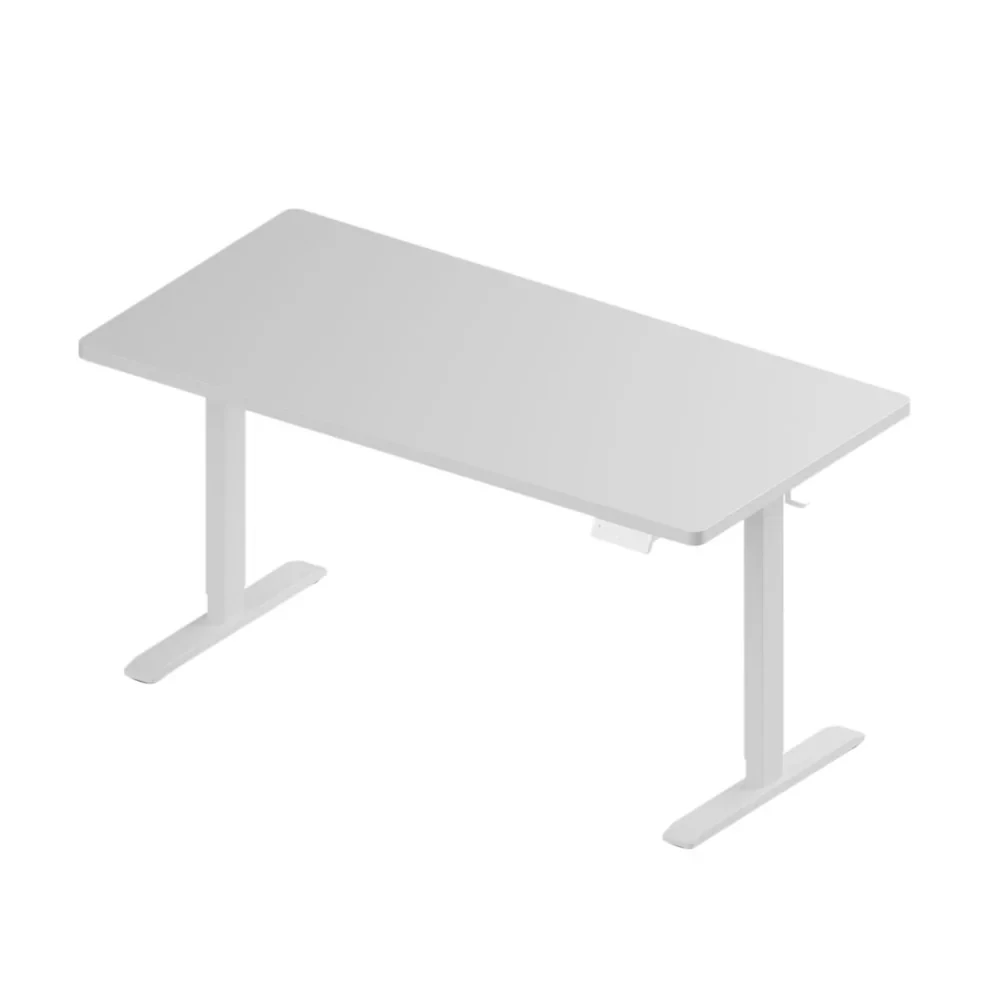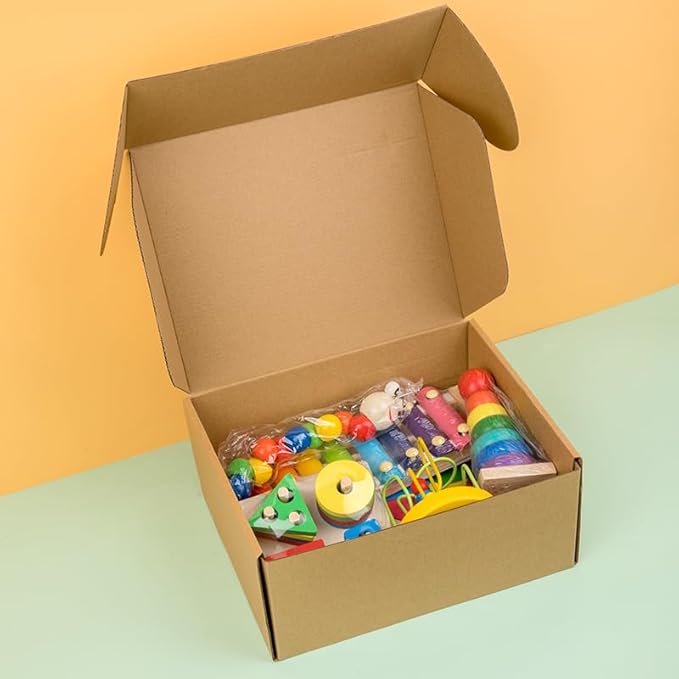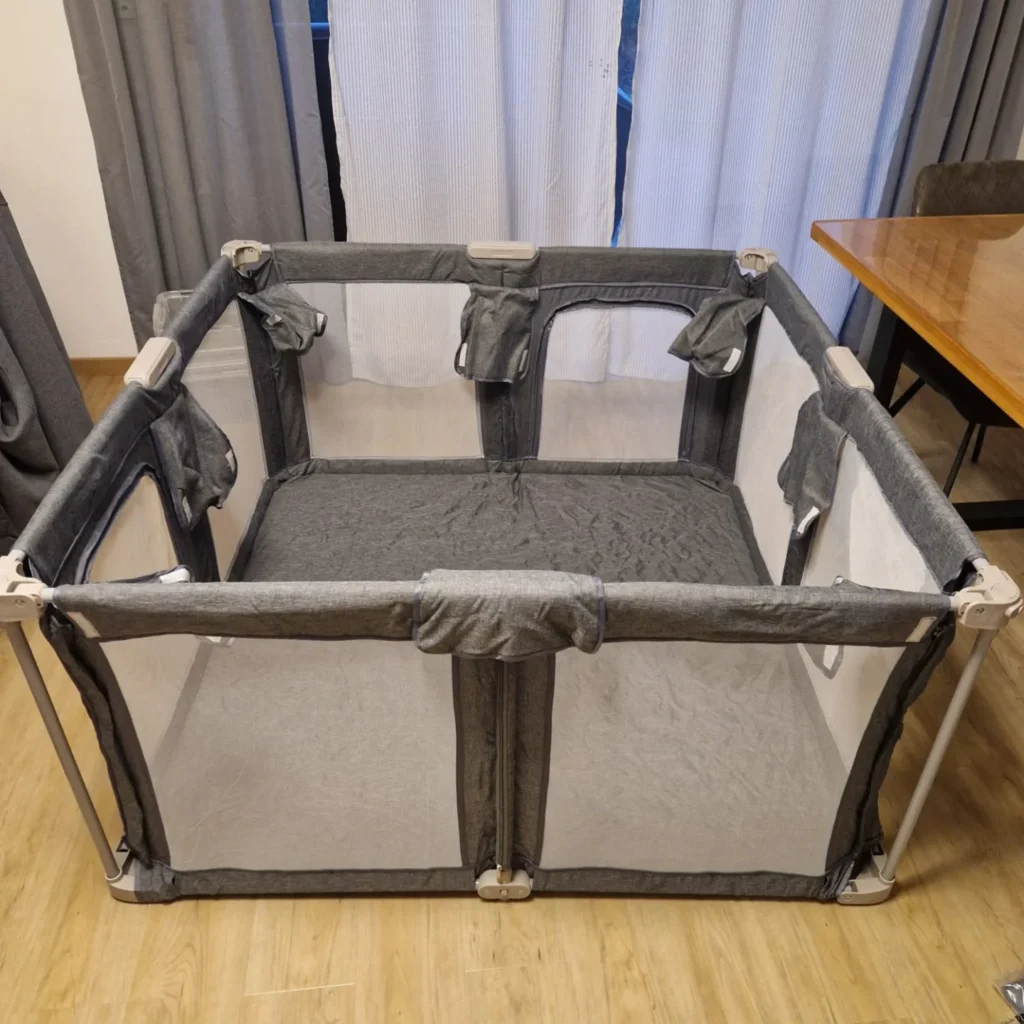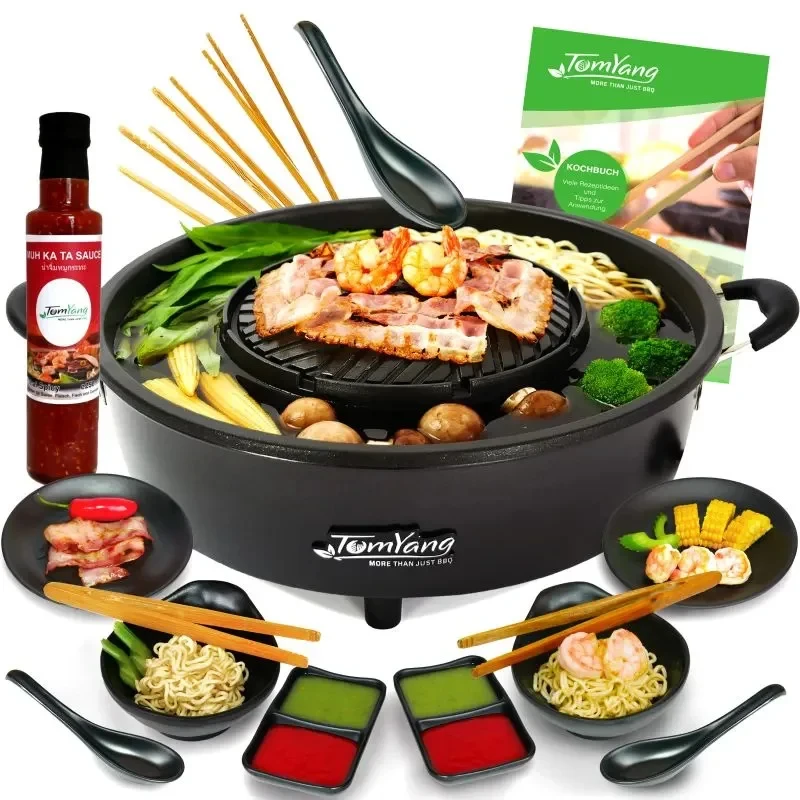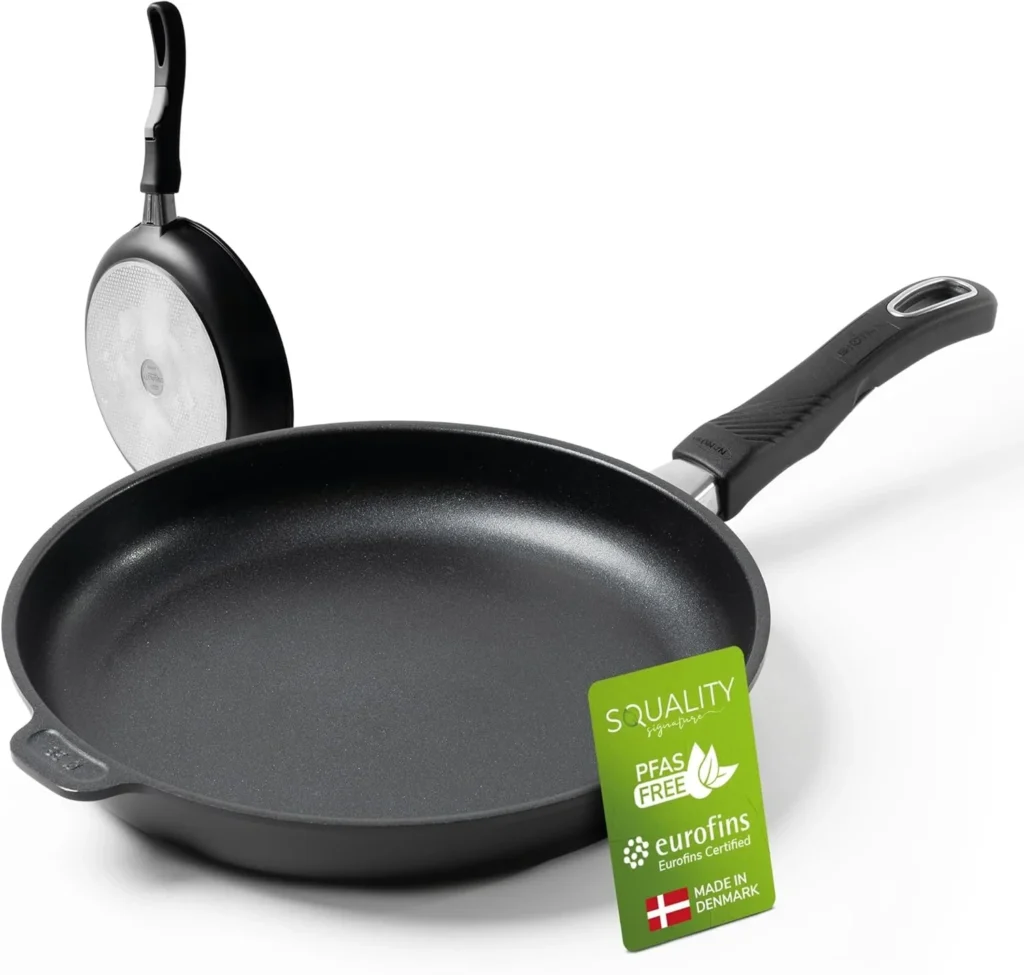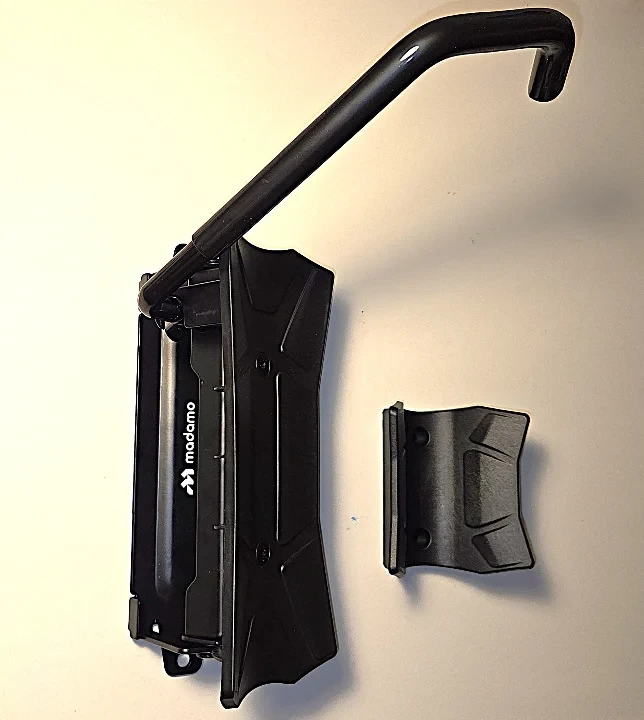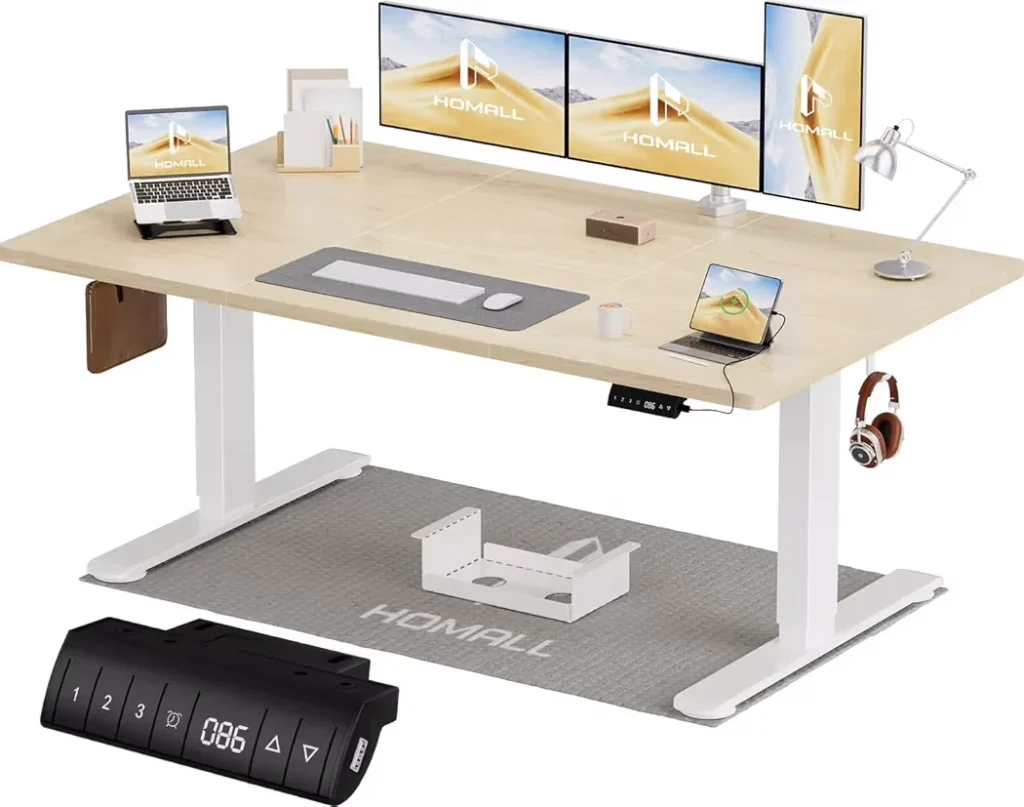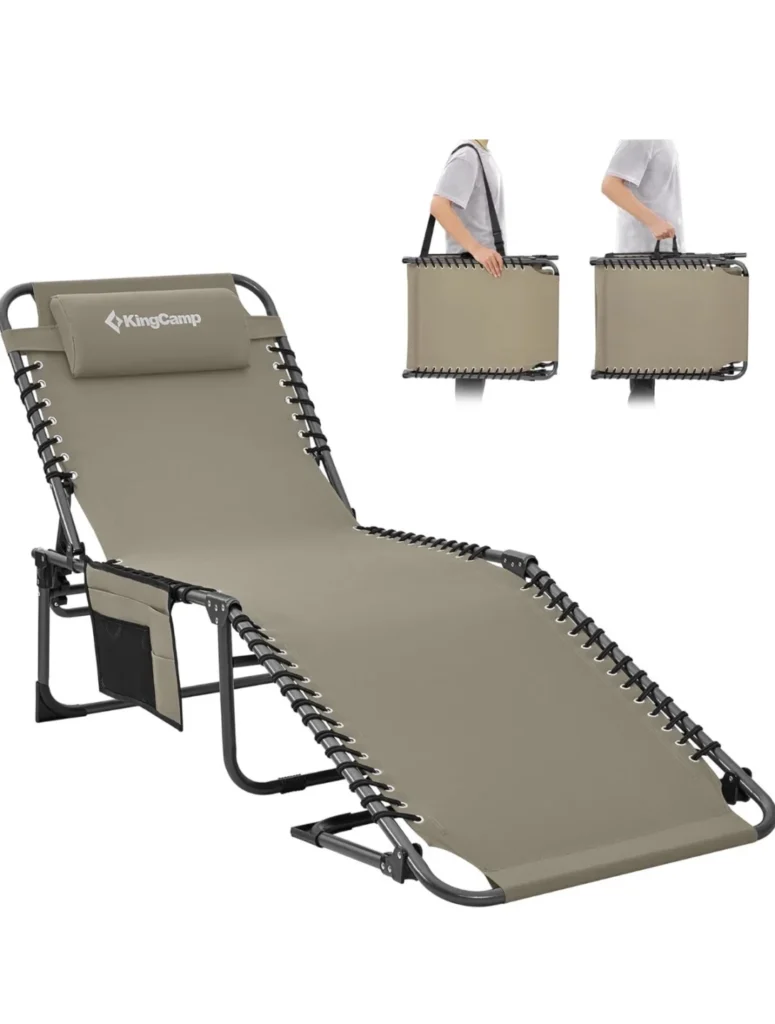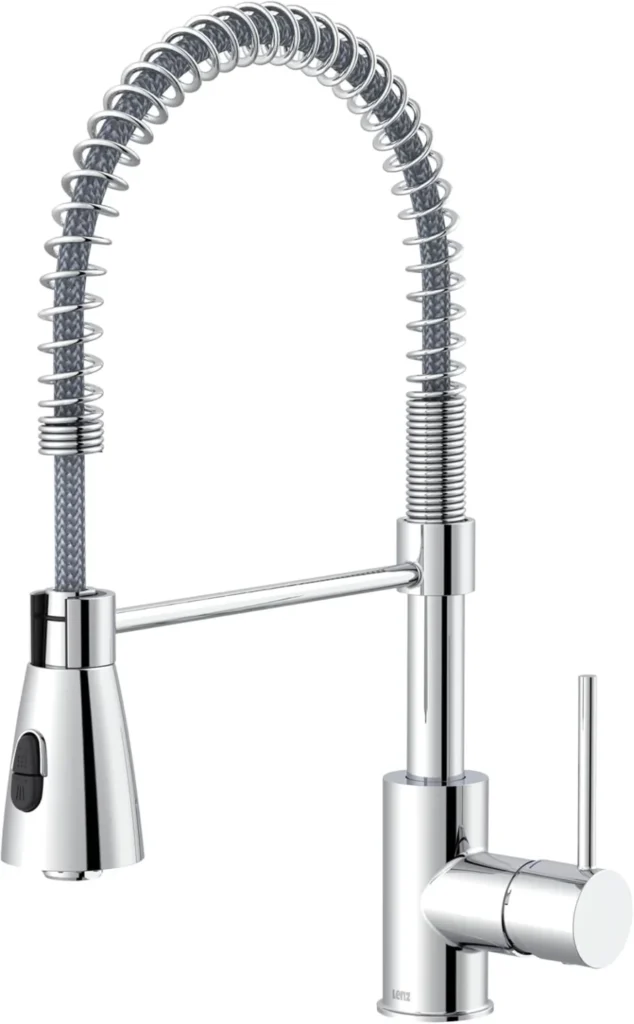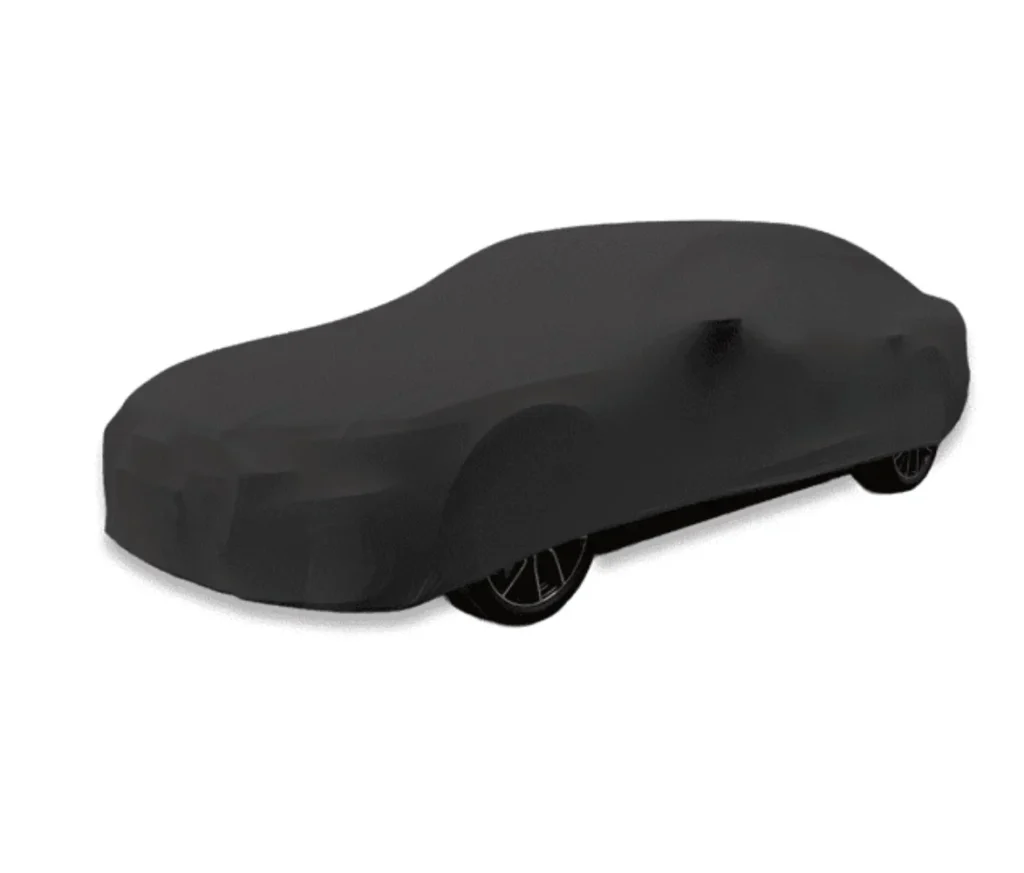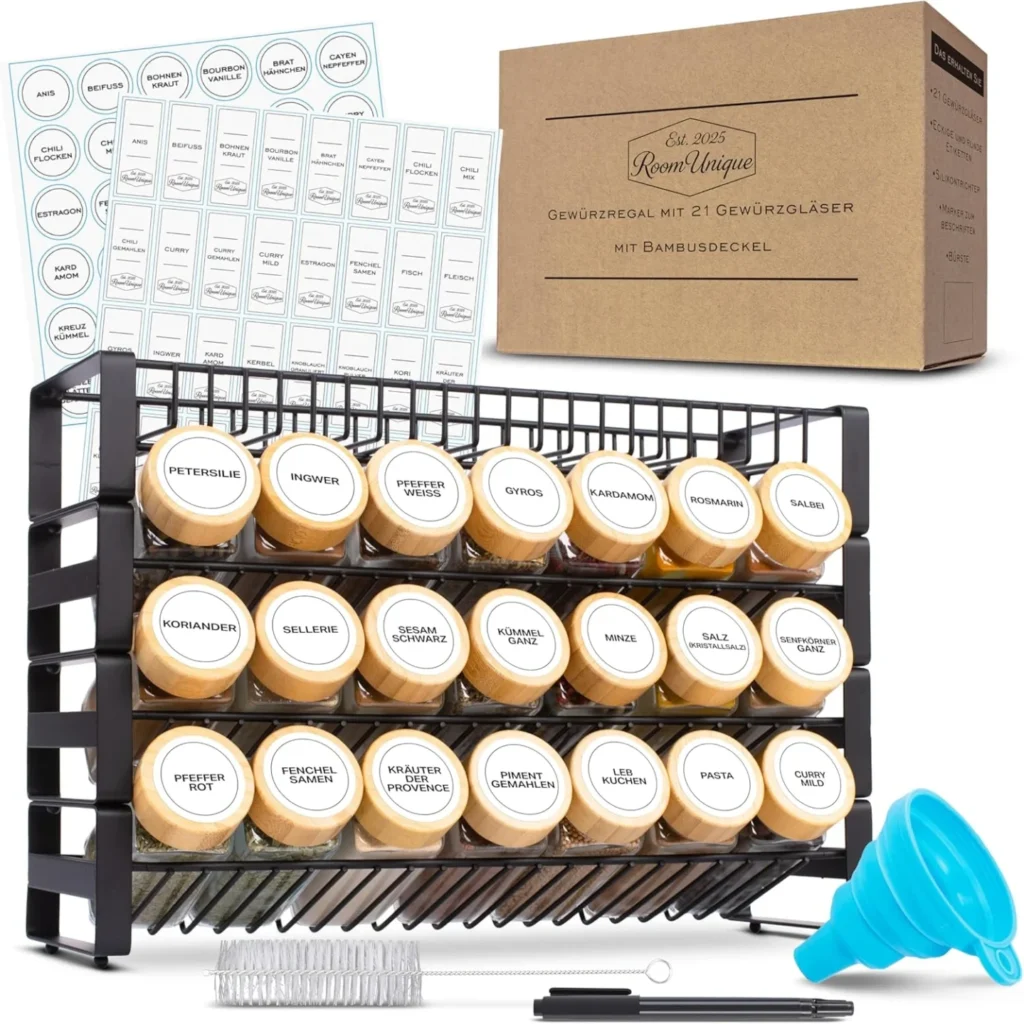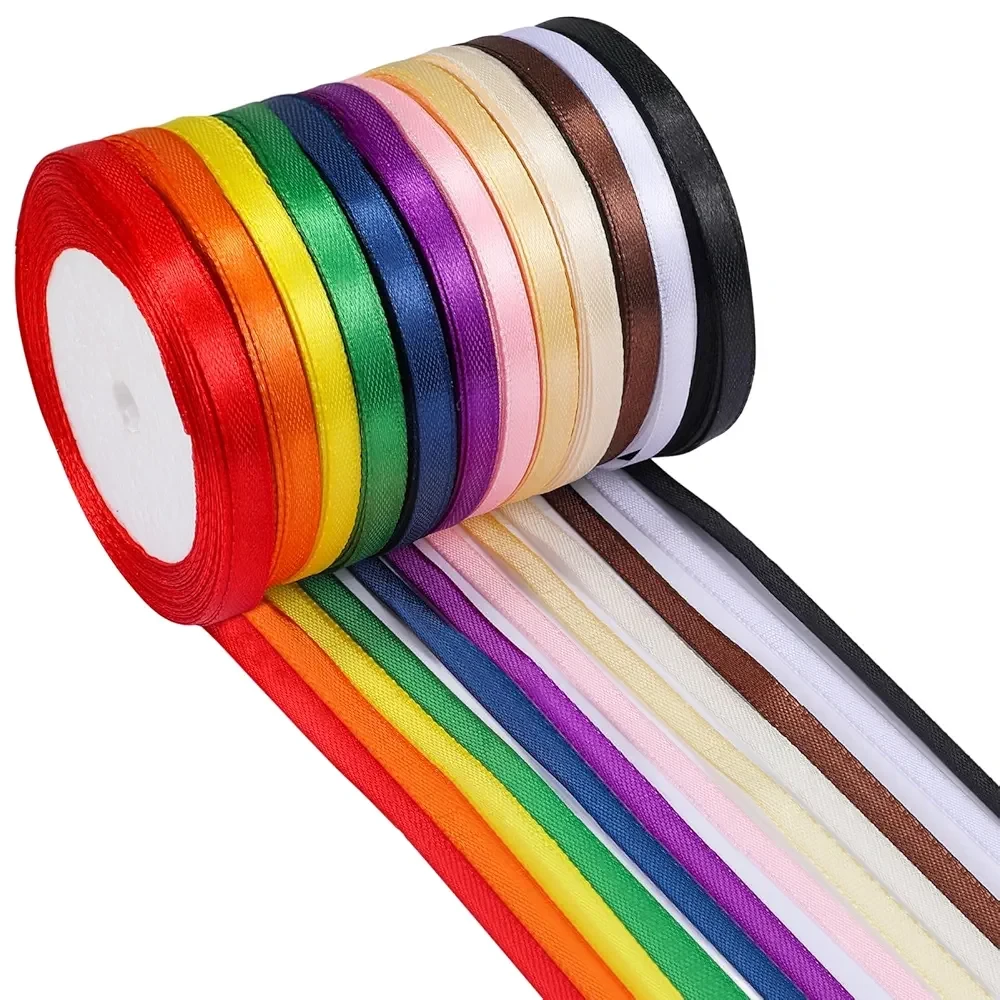The raised bed kit from Truly Timber made a very good impression overall in our test. The modular raised bed kit can be used to build raised beds in various sizes. You need at least the basic module with a square base area with an external length of one metre and a height of 29 cm. We are also testing the extension module, which can be used to extend the raised bed to a length of almost two metres. The raised bed kit impresses in the test with the very quick assembly of the basic frame, the excellent material quality and the large usable area. However, the height in the basic configuration is not sufficient to cultivate the raised bed without bending down. However, the modular design means that several sets can be stacked on top of each other.
Advantages
✅ Simple and quick assembly
✅ High-quality materials
✅ Sturdy components
✅ Easy to extend in all directions
✅ High usable area
Disadvantages
❌ Oversized shipping carton
❌ Base module relatively low
The first impression
The packaging and labelling
ℹ️ Here we take a closer look at packaging. Sustainability is becoming an increasingly important factor. In addition, adequate protection of the product must of course also be ensured.
| Criterion | Remark | Score achieved* |
|---|---|---|
| Product protection | Shipping and product boxes are sturdy, product adequately protected | 100 points |
| Sustainability Packaging | No unnecessary packaging waste, but unnecessarily large shipping box for the additional module | 60 points |
| Packaging convenience | A knife or scissors are required to open the boxes. Unhandy shipping box of the additional module | 60 points |
| Total | 73 points |
*The maximum score is 100 points

The additional module of the raised bed kit from Truly Timber was delivered in a sturdy but absurdly large shipping box. With a length of over one metre and a width of almost 60 cm, the shipping box has a volume of over 280 litres. Although the product box inside takes up the entire length, it is much narrower and flatter – it only takes up 15% of the volume. The rest of the shipping carton is filled with air and recycled paper, but far too little to hold the product carton in place. The recycled paper has a cushioning effect at best. A smaller shipping carton would not only save packaging material, but also increase the capacity utilisation of the logistics vehicles – the almost 250 litres of air require a lot of space in the cargo hold.
Alternatively, as with the basic module, the shipping carton can be dispensed with altogether. In this case, the product packaging, which is very similar to the product packaging of the basic module, also serves as the shipping carton. As the carton is firmly closed and stable , we believe that this is completely sufficient. Scissors or a knife are required to open the boxes.
Inside the product packaging, the components of the basic and additional modules are arranged compactly and non-slip. The space left free by the components in the cuboid box is filled with sufficient recycled paper to prevent the individual parts from slipping. The instructions for use are also packed together with the nails and connecting rods in a resealable bag in a recycled paper envelope. This means that the parts are quickly to hand.
All boxes and components arrived undamaged and in perfect condition. Thanks to the sturdy product box and the good arrangement of the components inside, both the base module and the additional module are well protected during transport.
After unpacking
Package contents and instructions
ℹ️ Most people’s first impression after unpacking is immediately memorable. Are the contents of the pack complete and does the manufacturer make it as easy as possible for me to use the product straight away?
| Criterion | Remark | Score achieved* |
|---|---|---|
| Package contents & scope | Raised bed set consisting of wooden planks, connecting material and dimpled foil | 100 points |
| Instructions for use | In German, clearly written and with illustrations | 100 points |
| Contact information | Can be found on the product packaging. Unfortunately without a telephone number. | 90 points |
| Total | 97 points |
*The maximum score is 100 points
The basic module consists of eight prefabricated wooden planks, four metal connecting rods with cover plugs, two pieces of dimpled foil and a large number of roofing felt n ails. The supplementary module contains a further four wooden planks, two connecting rods with cover plugs, a section of dimpled foil and roofing felt nails.
The operating instructions can be found in the cover and are supplied with both the basic module and the additional module. It is identical in both cases, as the structure of both the basic module and the additional module is described. The operating instructions are written in German and are easy to understand. Most of the assembly instructions are explained by drawings. In addition, the assembly instructions contain further information on the use and care of the raised bed.
Although the contact details are not on the instructions for use, they are on the product box. There is a sticker on the side, which is not only printed with the company name, but also with the company address, the name of the managing director and an e-mail address. The only thing we would have liked to see is a telephone number.

The first time in your hand
Product processing and appearance
ℹ️ Before we start the practical test, we take a close look at the product processing. How high quality are the materials used? Is the look and feel satisfactory?
| Criterion | Remark | Score achieved* |
|---|---|---|
| Visual appearance | Natural wood look with three-dimensional surface | 100 points |
| Processing | Very good workmanship, ground ends, precise milling and drilling | 100 points |
| Stability | Thick wooden planks and connecting rods made of solid material, tear-resistant dimpled foil | 100 points |
| Sustainability of the product | Good quality and high material thicknesses promise a long service life | 100 points |
| Total | 100 points |
*The maximum score is 100 points

The Truly Timber raised bed consists of wooden planks that are connected with rods to form a laterally closed shape. The inside is lined with a dimpled film that protects the wood from permanent moisture. The wooden planks are exactly one metre long, three centimetres thick and 14.5 centimetres high. Thanks to their thickness, the planks are very stable and can withstand high forces in the long term.
At both ends, the boards are each shortened by 3 cm to half their height to allow an overlap with the neighbouring board. The longer section is drilled through in the direction of the height to make it easier to insert the connecting rods. According to the manufacturer, the wood used is Douglas fir of domestic origin and appears untreated. The individual boards are solid and the natural grain is clearly visible. Longitudinal joints are milled into both sides of the wood, creating a high-quality three-dimensional look. However, the width and number of joints on both sides of each board is different, so that you can choose during assembly whether a few wide joints or many narrow joints should adorn the outside. The milling on the sides is precisely executed and results in a natural surface. The ends are sanded so that no splinters protrude. Only a few splinters remain at the drill holes, but these can be easily removed with a finger.
The connecting rods are made of aluminium and are 26 cm long. Their diameter is 8 mm. The surface is matt, but not visible in the assembled raised bed. As aluminium does not rust, the connections can be expected to last a long time . Black plastic caps are provided to cover the connecting rods, which are held in the hole by a plug-in mechanism.
The bubble wrap is made of dark grey plastic. The film is tear-resistant and non-stretchable, but can be easily bent lengthways. Each section is 27 cm wide and almost exactly 2 metres long. This makes the film slightly smaller than the inner surface of the raised bed, which has two planks and is therefore 29 cm high and (in the basic configuration) has a total length of four by 94 cm. The individual studs are tapered and taper in diameter from 19 mm at the base to 9 mm at the top. Their height is 8 mm. The dimpled film has almost 2000 dimples per square metre. The plastic foil is fastened with 17 mm long, silver-coloured nails. According to the manufacturer, these are made of galvanised steel. Their wide head distributes their holding force evenly across the film.
All components make a stable and high-quality impression. The workmanship is very good, which is particularly noticeable in the clearly visible wooden planks. These represent the elementary components and characterise the design of the raised bed.
This is what our practical test showed
Does the manufacturer keep its advertising promises?
ℹ️ Our practical test is the most relevant and therefore the most important. Here, the product has to undergo a wide range of criteria and tests. We check the functions and product promises of the test article.
| Criterion | Remark | Score achieved* |
|---|---|---|
| Construction of the raised bed | Very quick assembly of the base frame thanks to simple plug-in connection | 100 points |
| Usable area | Large usable area, but accessibility from both sides is recommended. Low height in basic configuration. | 90 points |
| Durability | High durability of Douglas fir wood, but could be extended with wood preservation | 95 points |
| Flexibility | Modular design allows easy expansion in length, width and height by purchasing additional modules | 100 points |
| Total | 97 points |
*The maximum score is 100 points
We start the practical test by assembling the raised bed in the basic configuration. To do this, the wooden planks are laid at right angles to each other and linked together with the connecting rods. The connecting rods fall through the precisely drilled holes and are held in place by gravity. The basic frame is completed in this way in around two minutes. The cover caps can simply be placed on the holes and prevent them from filling up with water when it rains.
The next step is to attach the film. As this is already cut to size, it can be attached directly. A (small) hammer is required for the strong nails . Although this takes considerably more time than putting the planks together, this step can also be carried out easily without any manual skills.
The assembled basic module has a square base with a side length of one metre and a height of 29 cm. The raised bed does not have a base, but it does not have to, as this allows excess water to seep downwards. You can now start filling and planting.
As the individual planks are only inserted, the plank connections can still be easily rotated around the axis of the connecting rod. This is no longer possible once the raised bed has been filled and the raised bed can no longer be moved.
Spraying the wood with water shows that it has not been treated. The water does not run off, but wets the surface evenly and is slowly absorbed. The natural design of the untreated wood looks excellent when new, but it is to be feared that this will not remain the case for long in outdoor areas. We therefore recommend applying a suitable wood preservative. However, even without wood preservative, Douglas fir wood can be expected to last between 10 and 15 years.
At one metre wide, the raised bed is just large enough for the plants in it to be easily reached, as long as the bed is easily accessible from at least two opposite sides. Good accessibility is important for sowing, digging, transplanting, watering, tending and harvesting the bed. If the gardener is physically fit, we believe that accessibility from one side is sufficient. The large width allows a large usable area of the raised bed and therefore the cultivation of many plants.
Due to the low height of only 29 cm, the advantage of the raised bed of not having to bend down when using it is unfortunately lost. To be able to cultivate the raised bed without bending down, several boards must be stacked on top of each other. This is easily possible thanks to the modular design of the raised bed. For example, two basic configurations can be built directly on top of each other to achieve a greater height.
Thanks to its modular design, the raised bed can also be extended in width. For this purpose, we are testing the additional module, with which the usable area of the raised bed can be almost doubled. To do this, two side walls of the raised bed are extended by one plank, resulting in a rectangular base area . The height and width remain the same and the length increases to 197 cm due to the overlapping of the centre joint. The wood and connecting rods correspond exactly to those of the basic module, so that the elements can be fitted together easily and a harmonious overall design is created. Unfortunately, the stud spacing of the studded foil does not correspond exactly to that of the main module, which means that the studded foil does not fit together. Otherwise, the advantages and disadvantages of the additional module are the same as those of the basic module.
Thanks to the simple assembly of the basic frame and the high level of flexibility, the raised bed has impressed in practical tests. The high width creates a large usable area and many plants can thrive in the raised bed. The disadvantage of the low height can be compensated for by stacking several sets on top of each other.

Price/performance ratio
and ratings from consumers
ℹ️ Finally, we look at how the product compares to the competition. Can it keep up with the competition in terms of price and quality? Would we generally recommend buying it? We also analyse consumer reviews and check whether the critical and positive reviews are actually justified.
| Criterion | Remark | Points achieved* |
|---|---|---|
| Price / performance ratio | Very good quality in the mid-price segment | 80 points |
| Rating cut | Not rated, as there are still too few customer reviews | |
| Total | 80 points |
*The maximum score is 100 points
Prices of up to €200 are charged on the Internet for products equivalent to the basic module. Very inexpensive products are available from as little as €51.99. The basic module of the Truly Timber raised bed is currently priced at €123.95, putting it in the mid-price segment. The additional module currently costs €69.95. The price ratio is reasonable for the quality and scope of services offered.
Overall result
| Weighting | Points achieved* | |
|---|---|---|
| 1. packaging & labelling | 10% | 73 points |
| 2. package contents & instructions | 10% | 97 points |
| 3. product processing & appearance | 20% | 100 points |
| 4. in the practical test | 40% | 97 points |
| 5. price/performance & consumer reviews | 20% | 80 points |
| Total | 92 points |





